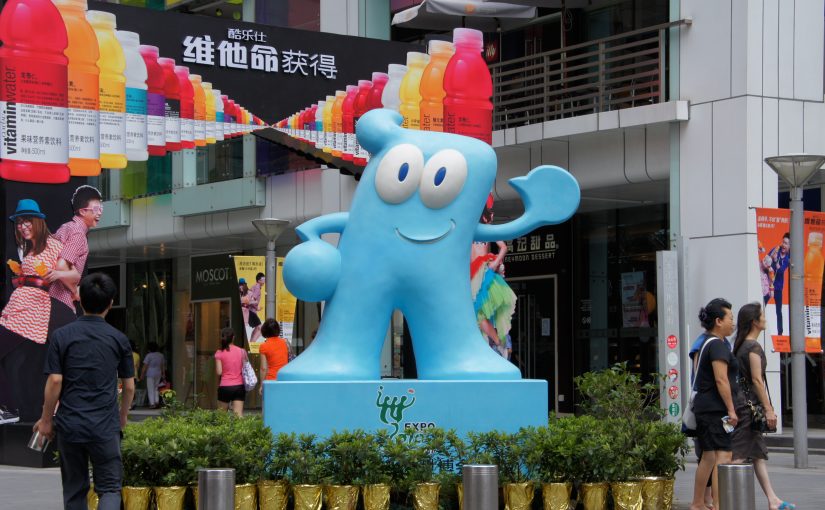A review of Shanghai Expo 2010, published in Blueprint August 2010
As global fibreglass mascot production shifts towards output of Wenlocks and Mandevilles in preparation for London 2012, close relative Hai Bao (known locally as the blue condom), also a blob of liquid, continues to lure punters from the streets of Shanghai to the massive 800+ acre site spanning the Huangpu river – host to this year’s Expo.
This vast undertaking, whose $55bn budget dwarfs any previous effort, is in its 4th sweltering month (out of 6) and appears as popular as ever, with an average of 380,000 making their way through the cattle pens and turnstiles every day. The infrastructure that affords this number of people access to the site in a more-or-less orderly manner is more impressive than much of the content, with the list including a whole new metro line, two stations, 6 ferry terminals and many new roads catering to hundreds of buses and taxis. Although congestion is part of the experience, all of this seems to operate relatively smoothly. The only serious oversights appear to have been the sun and the length of the queues. Their combined effect has necessitated the hasty erection of several kilometers of temporary queueing shelters – lending a somewhat utilitarian theme in place of the grander and more expensive walkways and congregation areas.
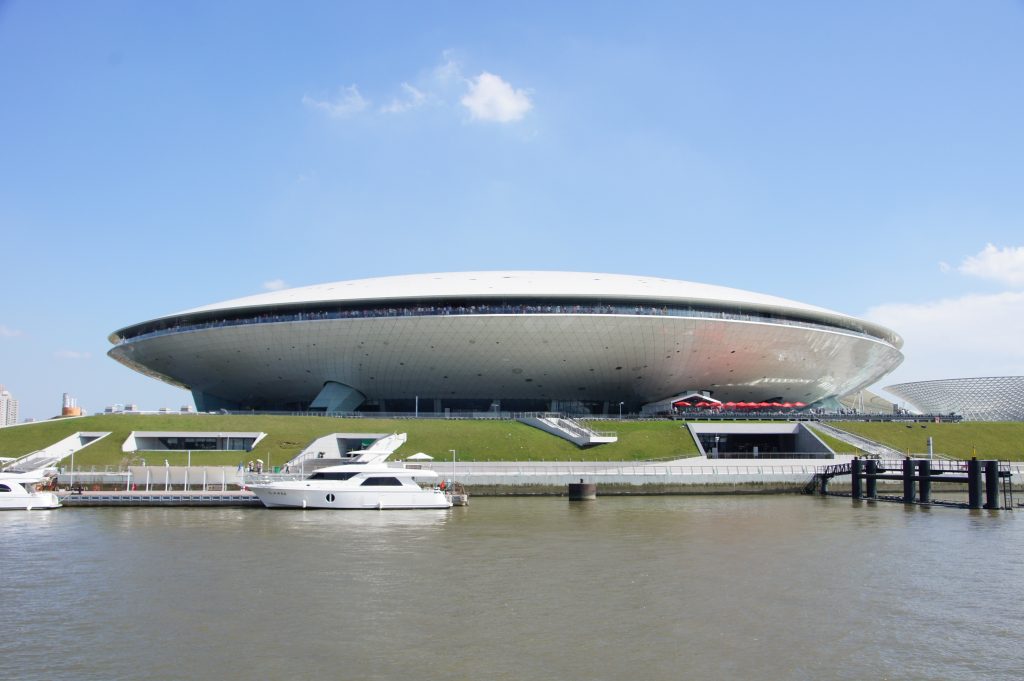
The two main areas of the site, separated by the river, are broadly: corporate and industry sponsored in the north; cultural and nationally sponsored to the south. Whilst there is plenty to amuse and amaze in the trade-show like State Grid Pavilion, Oil Pavilion and Footprint Theme Pavilion, there is no hiding the fact that the real draw lies across the river where 192 countries flex their creative muscles in communicating something of their country in response to the theme “Better City, Better Life.” Here, the overtones of diplomacy and friends-across-cultural-divides do little to mask the fact that for the majority of visitors it’s a global talent contest. Talent here being measured in two ways: visitor numbers and length of queue. Neither are formally published, but everyone seems to know, and it is what all the talk is about at the fair.
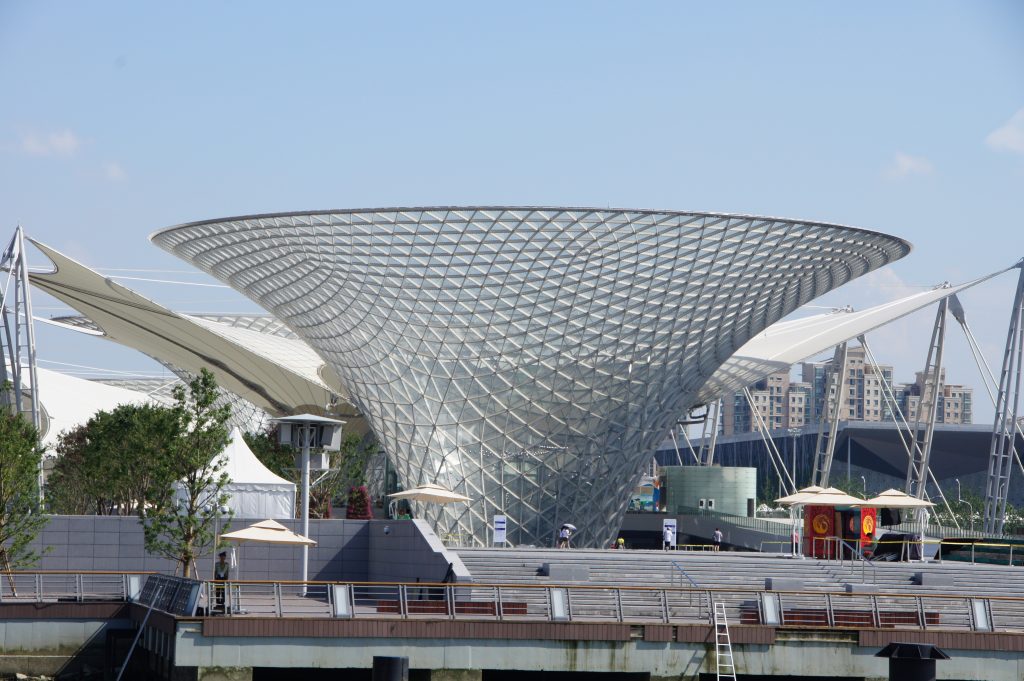
At the bottom of the scale are experiences offering little more than 3d Wikipedia pages, seemingly compiled from a checklist including a framed picture of a president or monarch, some geographic facts and figures, and some travelogue clip art. Some are simply and unashamedly gift shops with no edifying content whatsoever. These lower-tier pavilions are visited in the main by locals wanting to fill up their Expo Passports. This long-standing accompaniment to Expo culture has been adopted with gusto by Chinese visitors, who can exchange extensive collections of stamps for reduced queuing times at more popular attractions. The most advanced of these stamp-hunters don’t even bother entering the easy-access pavilions. It’s all about getting the stamp and moving on.
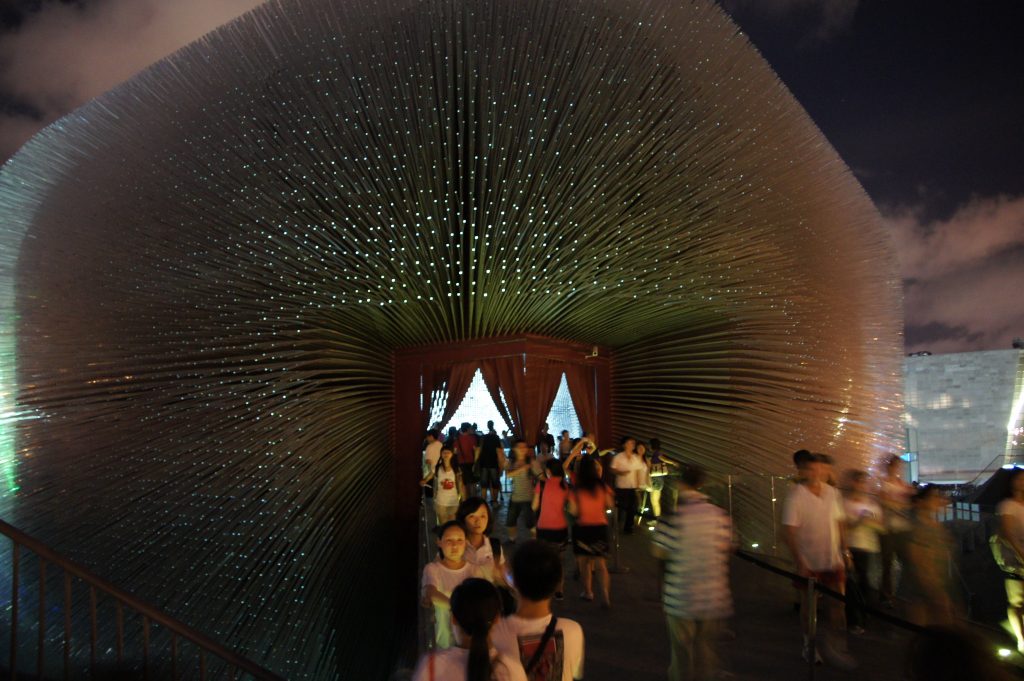
Amongst this demanding audience it should be a source of pride, therefore, that Team UK, along with China, Saudi Arabia, France and Japan lead the field as the most popular pavilions. Thomas Heatherwick’s Seed Cathedral and grounds seem quite modest amongst many of the attractions, and it can’t compete with the 8 hour or more queue that forms every day outside the Saudi “Moon Boat,” but it frequently tops the list of favourites and remains one of the most memorable structures. There has been much discussion about the relevance of this work to the theme of “Better City, Better Life” which seems unfair. Not only have many countries ignored this typically uninspiring brief completely, but the gist of the UK pavilion is abundantly clear. While the narrative around the embedded seeds and the light filaments remains convoluted, the overall theme of green space, growth and a city in tune with the elements could hardly be expressed more succinctly. The material leading up to, and away from the entrance, designed by interdisciplinary consultancy Troika, is subtle and engaging. There are no text boxes explaining the concept and no attempt to cram too much content into what is essentially a spectacle. There is a beautiful electromechanical raindrop lighting effect near the entrance – infinitely more poetic than the video and CGI projections that seem to characterise almost every other pavilion.
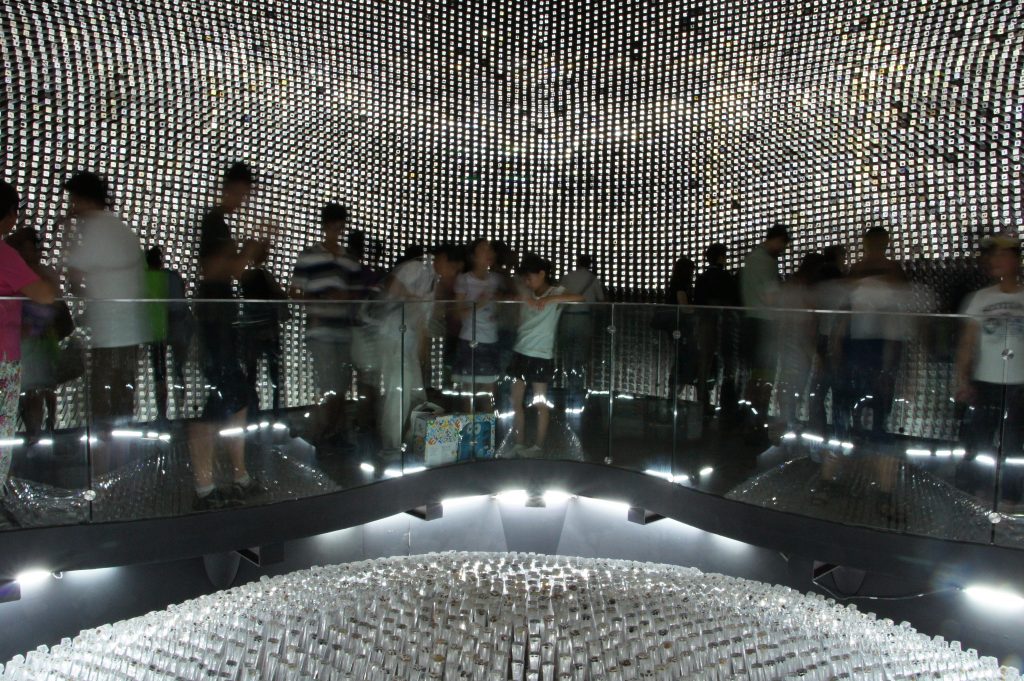
Although larger than the photographs tend to show, the tendency of people to dwell in the Seed Cathedral has led to some lag, generating long queues and a less than contemplative atmosphere inside. It is widely praised though, possibly in the respite it provides from the typical visitor experience – the UK pavilion is one of the few structures that eschews the shed-plus-cladding characterising almost every other venue, and it is also rare that does not rely on a big audio-visual show to get its story across. In the case of the Saudi offering, this is admittedly in the form of the biggest IMAX screen on the planet, but many other countries might have looked at more original ways of making their point.
Falling into some of these traps, but worthy of mention nonetheless, is the Spanish Pavilion. Its cladding of what look like rattan bed frames stands out amongst its shinier counterparts and draws respectable crowds prepared to wait the 3–4 hours it takes to get inside. Here, the format starts off relatively predictably with some large multi-faceted video installations depicting daily life. After a couple of these, though, there is really nothing to prepare the visitor for the final treat – a 40 foot robotic baby. With no apparent need for explanation and no conceivable link to anything preceding it, this deeply unsettling creation simply sits there, turning its head and grinning. As an homage to the country’s pivotal contributions to the surrealist movement, it worked brilliantly. Either way, it leaves the visitor with a firmly embedded memory.
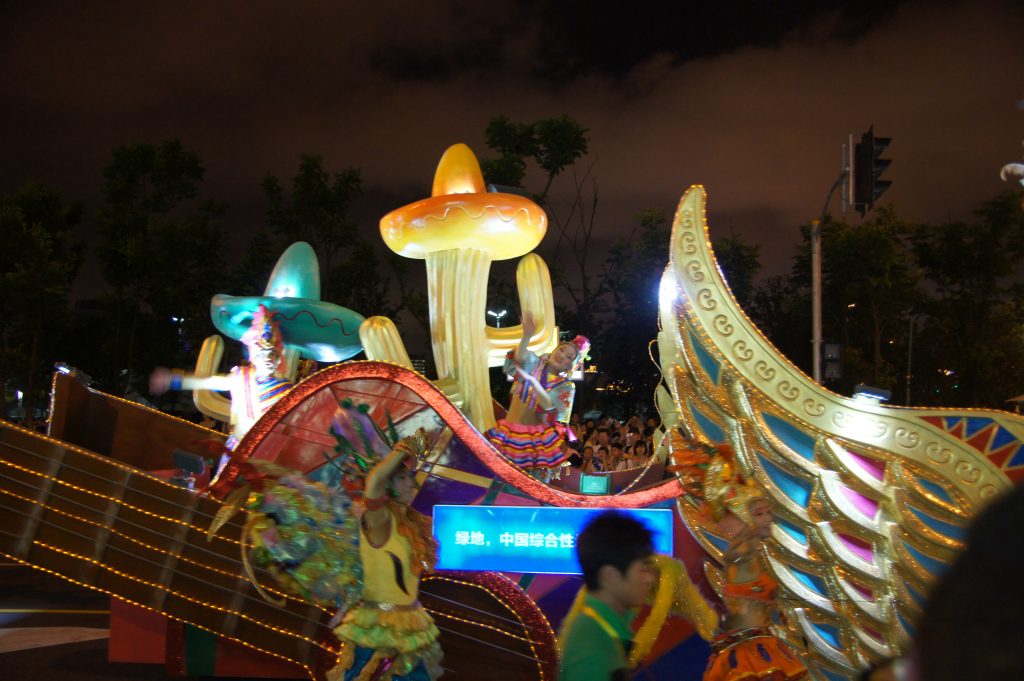
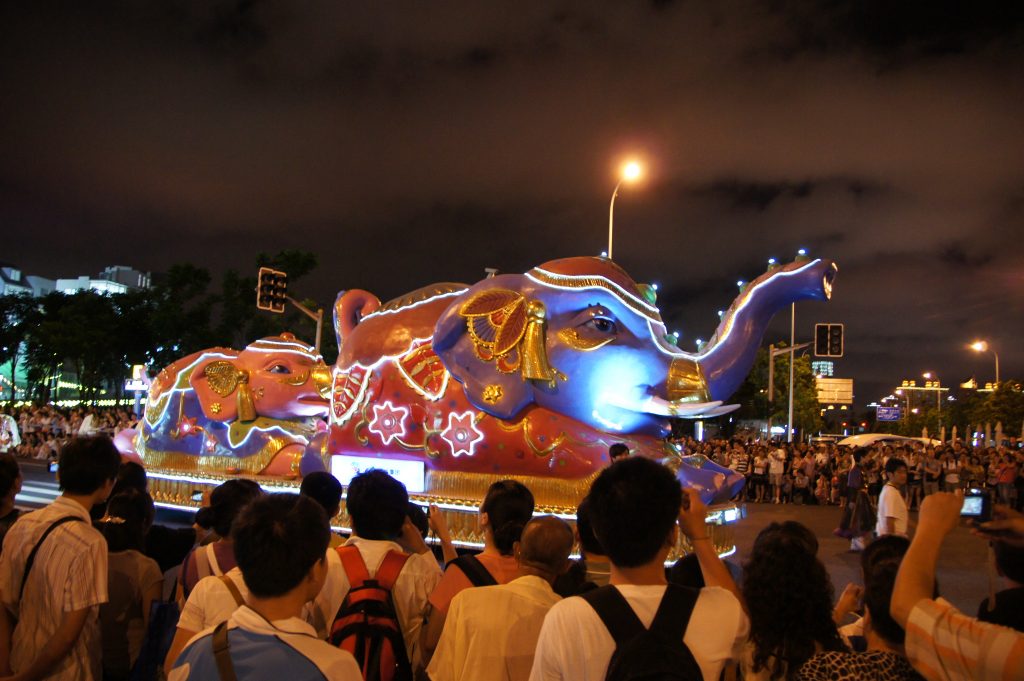
If countries were anxious to avoid the pitfalls of national stereotypes, these are in plentiful supply during the locally produced and apparently Main Street Disney-inspired parade. This nightly event provides an irony-free vision where Mexico is populated by sombrero-wearing cacti, and Hawaii by hula-girls dancing atop a floral volcano. One can’t help feeling that this undermines the more progressive images projected by these countries, but it certainly imparts some much needed energy to a weary audience, many of whom have spent the majority of the day shuffling from one queue to another.
